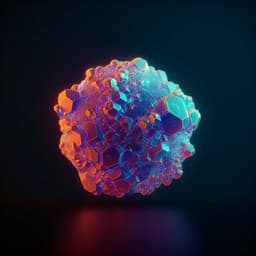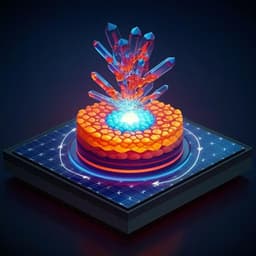
Physics
Carrier multiplication in perovskite solar cells with internal quantum efficiency exceeding 100%
Y. Wang, S. Ye, et al.
This cutting-edge research conducted by Yue Wang and his colleagues investigates carrier multiplication (CM) in Cs0.05FA0.5MA0.45Pb0.5Sn0.5I3 perovskite solar cells. The study reveals remarkable CM effects that can significantly enhance the efficiency of photovoltaic cells, surpassing conventional limits with an unbiased internal quantum efficiency exceeding 110%. A redesign of the device architecture is proposed to fully harness this potential, paving the way for next-generation solar technologies.
~3 min • Beginner • English
Related Publications
Explore these studies to deepen your understanding of the subject.







